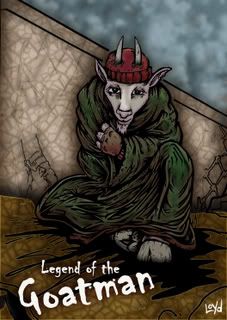
The Bottoms:
- Lansdale, J. (2000). The Bottoms. New York: Mysterious Press, 328 pp.
- Genre: Suspense/Crime
- Awards: Edgar Award for Best Novel
This novel is an excellent piece of Southern crime fiction. The tone and style of the narrative give it a voice similar to Gaines except with an element of pulp crime novel. It contains many issues such as bigotry and kinship. The interactions between characters are skillfully developed and the dialogue flows with a smooth rhythm. Additionally, the segregation of black and white communities in Texas during the 40's is highly detailed. Every character--black or white--is inescapably tied to each other and their communities. Landsdale employs the use of the mysterious Goat Man in order to present the reader with a villain the children can easily conceptualize--something roughly like Satan. This disassociation gives the children characters a certain amount of reality. Additionally, it allows the true identity of the murderer to go obscured until the very end of the novel. The most important statement that this novel makes is that even the young can stand up against the most detestable acts of ignorance and violence.
- Classroom Use: I could see using this novel in a literature circle or as an individual read. It is rather gruesome and would most likely not be appropriate for a whole class. It could easily be used as a jumping point for other contemporary works of macabre, such as Katherine Dunn' Geek Love or Jill Berry's Cruddy.
- Appropriate Age Range: 16 and above. This novel is very violent. While it does deal with important social issues for all-ages to consider, the gruesomely detailed descriptions of murders, rapes, and corpses would not be appropriate for much younger students.

1 comment:
Brian
First of all, the inclusion of artwork on your blog drew me immediately to read this review. Brilliant idea. Secondly, I enjoyed your detailed synopsis that refrained from spoiling the conclusion of the mystery. Also, I value your restraint in recommending disturbing material to younger readers. You provide a very thoughtful review.
I might recommend a pair of Graphic Novels I read just previous to starting summerschool. I didn't review them mostly because they didn't address adolescent issues, but partially because they were rather disturbing true crime stories. They are both by Rick Geary- "The Mystery of Mary Rogers" and "The Beast of Chicago". The library has these and others by the same artist. The drawings are great, too. I'd be curious to hear your impressions if you ever get a moment to check them out.
Post a Comment